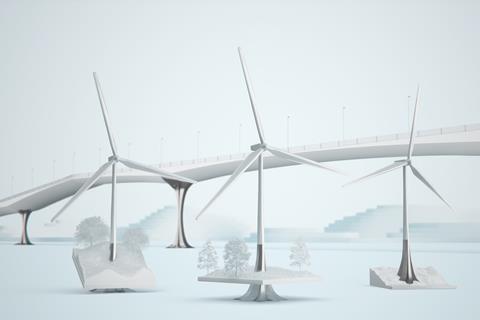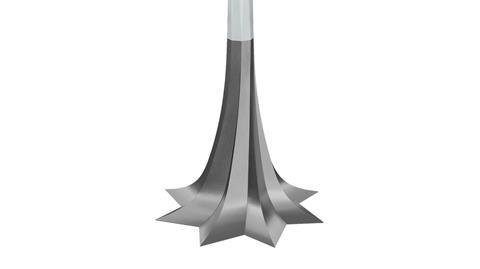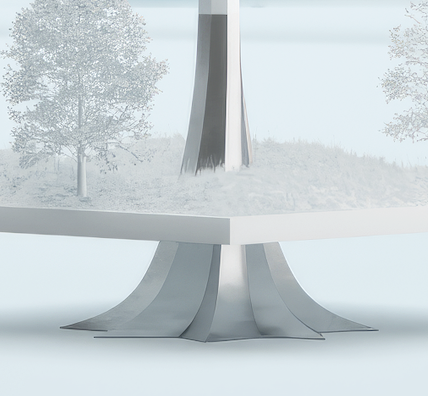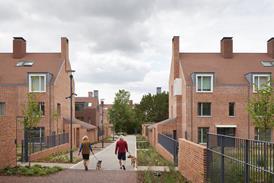The design utilises recycled steel, robotics and Swedish engineering to create a more sustainable solution for constructing onshore wind turbines

Swedish design and technology startup Stilfold has unveiled a new design concept for the foundation of wind turbines, which could reduce the CO2 emissions generated during the construction of onshore turbines by as much as 80%.
The design involves cutting several triangular pieces of steel from a large flat sheet and folding each piece down the centre to create a series of tall, tent-shaped three-dimensional beams.
Each beam would be designed and constructed according to site conditions following a ground scan using computer-guided software.
Employing a manufacturing technique the team have coined ‘industrial origami’, the process will employ robots that are able to fold single sheets of steel into detailed, lightweight, and durable structures with minimal component parts.
The triangular beams would be placed side-by-side and twisted together (similar to a piece of rope), before being bonded to form a strong foundation that curves outwards at the bottom like a root structure.
The bottom of each of the beams would then be anchored to the ground individually for improved stability, mimicking the roots of a tree.

The estimated climate performance potential of Stilfold’s design over the next five years is 8.8 megatonnes, equivalent to 25% of Sweden’s annual CO2 emissions.
Jonas Nyvang, chief executive officer at Stilfold, explained: “The foundation of an onshore wind turbine in the 7-8MW range is constructed using over 1,000m3 of concrete and 150 tons of steel reinforcement. This creates a number of challenges: economical, logistical and technical.”
By omitting the use of concrete and optimising how wind turbine foundations are transported and constructed, Nyvang’s design “offers a cost-efficient and environmentally-friendly way of building the foundation of wind turbines. It also eases the logistical burden of wind turbine construction by enabling modular construction: the Stilfold beams can be transported individually and assembled on site.”

The design hopes to provide a robust, adaptable structure suitable for various ground conditions; and could also be adapted to construct the foundation of other outdoor structures such as buildings and bridges.
The technology is currently being used to build a fleet of sustainable steel electric motorbikes through sister company, Stillride. The firm is also working with Polestar to build the world’s first climate neutral car.
Stillfold will be working with European partners to commercialise the wind turbine concept later this year.
















No comments yet